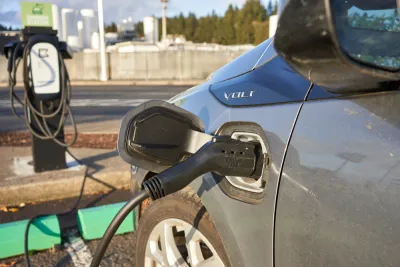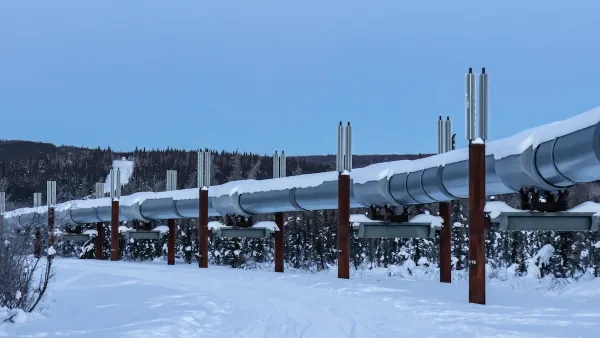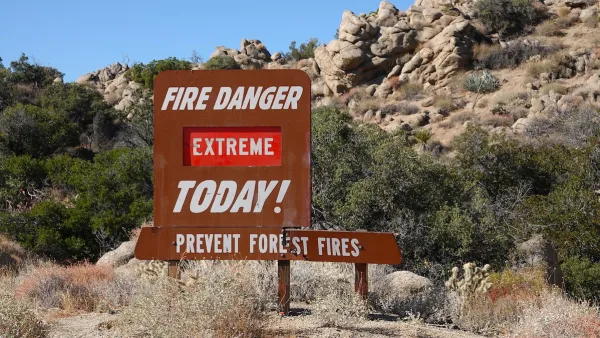Biden is amping up his campaign promises to leverage the federal government in the fight to reduce greenhouse emissions in the U.S. economy.

"On Tuesday, Biden unveiled a new climate plan that expands on his initial proposal by spending $2 trillion over four years instead of $1.7 over a decade," reports Zoya Teirstein.
"It calls for getting rid of all emissions from the electricity sector by 2035, creating a million new jobs building electric vehicles and charging stations, retrofitting existing buildings and constructing new ones to make the housing sector energy efficient, and ensuring that 40 percent of the benefits of this spending on green initiatives goes to disadvantaged communities," explains Teirstein.
Among some smaller pieces of the climate plan are several programs intersecting with the interest of planners, including promises to invest in plans and infrastructure that prioritizes bikes, pedestrians, and micromobility.
Additional news coverage of Biden's new climate plan is available at Smart Cities Dive, NPR, New York Magazine, and the Associated Press. An opinion piece saying the plan would be a disaster for workers and the economy needs the kinds of deregulation pursued by the Trump Administration, is available on Fox Business.
FULL STORY: 3 unexpected ways Joe Biden plans to tackle climate change

National Parks Layoffs Will Cause Communities to Lose Billions
Thousands of essential park workers were laid off this week, just before the busy spring break season.

Retro-silient?: America’s First “Eco-burb,” The Woodlands Turns 50
A master-planned community north of Houston offers lessons on green infrastructure and resilient design, but falls short of its founder’s lofty affordability and walkability goals.

Delivering for America Plan Will Downgrade Mail Service in at Least 49.5 Percent of Zip Codes
Republican and Democrat lawmakers criticize the plan for its disproportionate negative impact on rural communities.

Test News Post 1
This is a summary

Test News Headline 46
Test for the image on the front page.

Balancing Bombs and Butterflies: How the National Guard Protects a Rare Species
The National Guard at Fort Indiantown Gap uses GIS technology and land management strategies to balance military training with conservation efforts, ensuring the survival of the rare eastern regal fritillary butterfly.
Urban Design for Planners 1: Software Tools
This six-course series explores essential urban design concepts using open source software and equips planners with the tools they need to participate fully in the urban design process.
Planning for Universal Design
Learn the tools for implementing Universal Design in planning regulations.
EMC Planning Group, Inc.
Planetizen
Planetizen
Mpact (formerly Rail~Volution)
Great Falls Development Authority, Inc.
HUDs Office of Policy Development and Research
NYU Wagner Graduate School of Public Service





























